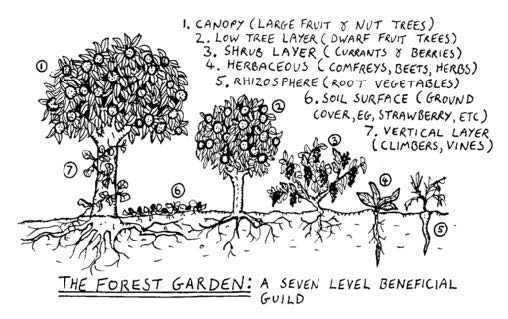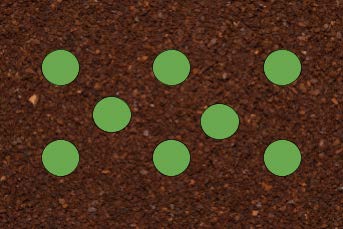Want to start sustainable gardening but don’t know where to begin? Here are some simple sustainable gardening practices you can try today. Not only will your local ecosystem benefit, but you’ll also enjoy experimenting with these eco-friendly ideas!
Water Catchment System: A Simple Sustainable Gardening Method
Water catchment is a great way to recycle water. There are numerous ways to do this, such as by placing a bucket or similar item outside to catch water when it rains. Then use the captured water to water your crops. Another water catchment method is to place a bucket in the sink or shower to save the water that comes out before it reaches your desired temperature!
Plant Native Perennials for a Sustainable Home Garden
Planting perennials in the garden is a great way to maintain soil coverage and structure. It is a key component in permaculture, which aims to mimic nature (see image below). Go one step further and plant native perennials! Native plants are extremely beneficial in gardens. They are vital for native pollinator populations, and are also better suited for the local environment. What’s not to love! For more information on permaculture and the image used below, visit this link: Permaculture.

Plant Crops Closer Together to Save Water and Space
This one is simple. When sowing seeds or placing plant starts in the soil, place them a bit closer together than the package instructions might suggest. Try planting them in a staggered pattern instead of a line. This allows the soil to maintain more coverage, improving soil moisture levels. It also allows you to fit more crops in the garden. Try the staggered planting pattern below!

Water in the Evening for Eco Gardening Efficiency
Watering the garden in the evening (about an hour or two before sunset) reduces the amount of evaporation that occurs, meaning that more water is absorbed into the soil and plants. This reduces water usage and allows plants to absorb the water overnight.
Water to Mimic Rainfall and Protect Your Soil
When watering the garden with a hose, try to hold it in a way that the water falls like rain. Angle the hose so that the water falls from higher up and more gently reduces soil compaction and can improve absorption.
Companion Planting: Natural Sustainable Gardening Practices
Planting crops that help each other grow, such as by attracting pollinators or controlling pests, can increase the success of those plants. For more information on companion planting, check out the book Tomatoes Love Carrots by Louise Riotte. Or, visit this page on the Almanac website: Companion Planting Guide
These are just some of the many ways to make a garden more sustainable and aligned with nature. These steps not only support the environment and soil health, but can improve crop yields as well! Sustainable gardening practices like these make it easier to build a thriving, eco gardening space right at home.
Frequently Asked Questions About Sustainable Gardening
1. What does sustainable gardening mean?
Sustainable gardening is the practice of growing plants in a way that conserves resources, supports soil health, and benefits the environment. It includes simple methods like water catchment, planting native perennials, and companion planting.
2. What are some common sustainable gardening practices?
Some of the most effective sustainable gardening practices include water conservation, crop rotation, composting, eco gardening techniques, and using native plants suited for your climate.
3. What plants are best for a sustainable garden?
The best plants for sustainable gardens are native perennials, drought-tolerant plants, and crops that thrive naturally in your local environment. These require less water, fewer chemicals, and attract pollinators.
4. How can I start sustainable gardening at home?
You can start sustainable gardening at home by collecting rainwater, planting native species, reducing chemical use, and following eco gardening methods such as watering in the evening and companion planting.
5. What is the 3-year rule in gardening?
The 3-year rule in gardening often refers to crop rotation cycles, where crops are rotated every three years to maintain soil fertility and reduce pest problems, an important sustainable gardening method.

